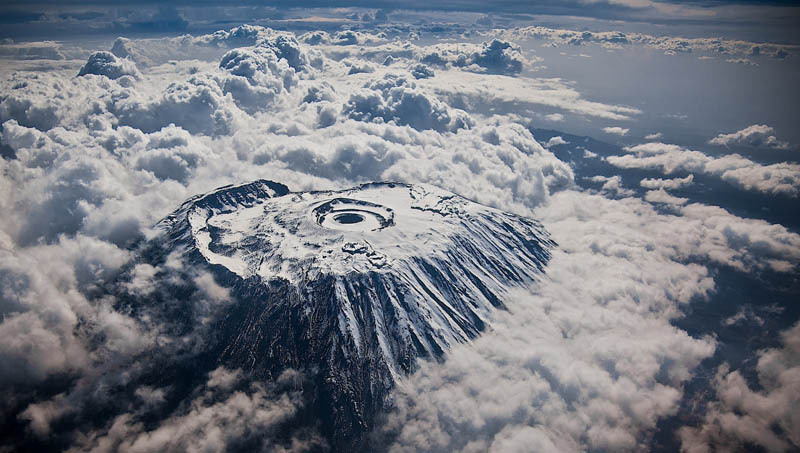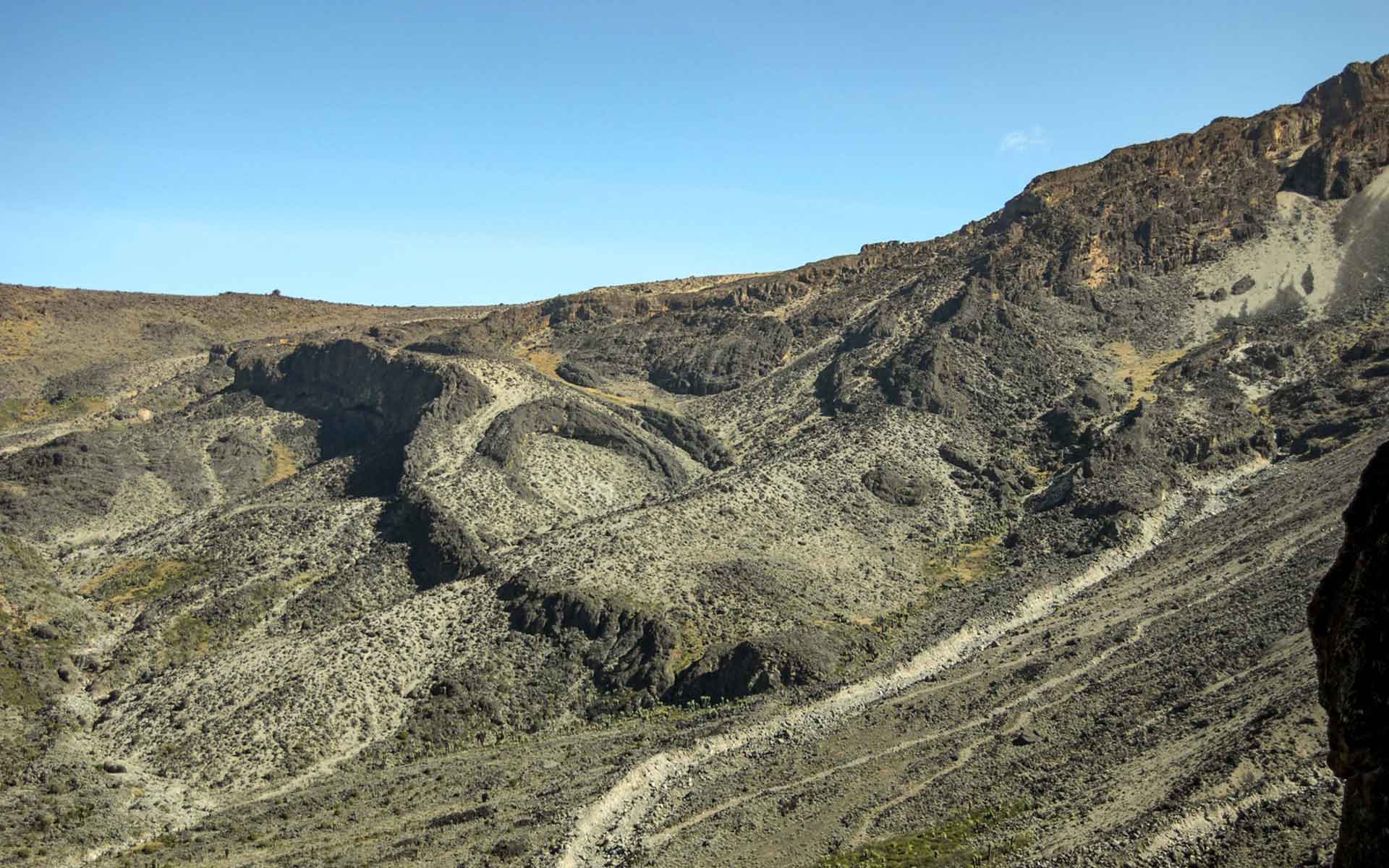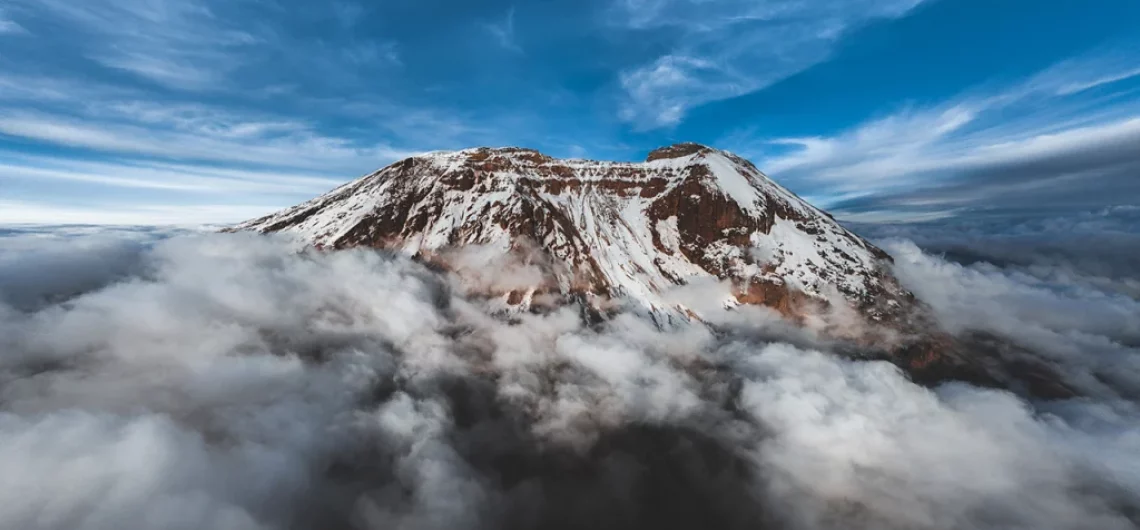Kilimanjaro Geology
Have you ever wondered about the majestic beauty of Kilimanjaro and how its geology shapes the landscape?
Explore the geology of Kilimanjaro, from its formation and volcanic activity to the different rock types that make up this iconic mountain.
Delve into the effects of climate change on Kilimanjaro and the importance of its geology to the local ecosystem and economy.
Discover how we can all play a role in preserving Kilimanjaro’s geology for future generations.
Key Takeaways:

- Kilimanjaro is a dormant volcano and the highest peak in Africa, attracting many climbers and tourists each year.
- The geology of Kilimanjaro includes a variety of rock types and formations, shaped by volcanic activity over millions of years.
- Climate change has had a significant impact on Kilimanjaro’s glaciers and ecosystems, making conservation efforts crucial for preserving its unique geology.
The Geology of Kilimanjaro:

The geology of Kilimanjaro is a fascinating blend of stratovolcano formations, obsidian-rich rocks, and glacial features. The mountain’s geological makeup includes volcanic cones, magma reservoirs, and a diverse range of rock types.
-
The Formation of Kilimanjaro:
Kilimanjaro’s formation can be traced back to tectonic plate movements and volcanic eruptions that shaped the landscape over millions of years. The mountain’s unique geographical formations and erosion patterns contribute to its remarkable stature.
As the African and Eurasian tectonic plates collided millions of years ago, the intense pressure and movement caused the Earth’s crust to uplift, giving rise to the volcanic activity in the region.
These volcanic eruptions, particularly from the Great Rift Valley, deposited layers of lava and ash which gradually built up, forming the foundation of the majestic peak that is now Kilimanjaro.
Over time, the slow movement of the tectonic plates continued to push the mountain upwards, while erosion from glaciers and rivers sculpted its distinct features like the breathtaking snow-capped summit and the deep valleys that flank its slopes.
-
The Volcanic Activity of Kilimanjaro:
Kilimanjaro exhibits periodic volcanic activity, characterized by eruptions that have shaped its landscape through lava flows, ash deposits, and seismic events. The mountain’s history is marked by the formation of lava formations and volcanic cones.
These volcanic events have played a crucial role in crafting the intricate topography of Kilimanjaro, leaving behind a trail of hardened lava that intertwines with the mountain’s soil and rocks. The lava formations are evidence of the intense heat and pressure that once dominated this region, solidifying into rugged igneous structures over time.
Studying these formations provides scientists with valuable insights into the geological processes that have sculpted Kilimanjaro’s iconic silhouette. The presence of volcanic cones adds to the mountain’s allure, offering visitors a glimpse into the volatile history that continues to shape this majestic peak.
-
The Rock Types of Kilimanjaro:
Kilimanjaro boasts a diverse range of rock types, including volcanic rocks, obsidian-rich formations, and unique geochemical compositions. The mountain’s geological makeup showcases a rich tapestry of rock formations.
Volcanic rocks, such as basalt and tephrite, dominate Kilimanjaro’s composition. These rocks are products of volcanic eruptions and form the foundation of the mountain. Obsidian deposits found on the slopes provide insight into the geological history of the region. The geochemistry of these rocks reveals high silica content, contributing to their unique appearance and durability.
The complex interplay of these different rock types gives Kilimanjaro its distinctive landscape, attracting geologists and climbers alike to explore its rocky terrain.
The Effects of Climate Change on Kilimanjaro:
The impact of climate change on Kilimanjaro is evident through the rapid retreat of its glaciers and the shrinking of its iconic ice cap. Global warming poses a significant threat to the mountain’s glacial formations and ecological balance.
-
How has Climate Change affected Kilimanjaro?
Climate change has led to the rapid decline of Kilimanjaro’s glaciers, resulting in heightened erosion processes and impacting the mountain’s accessibility for climbers. The diminishing ice cover has altered the landscape significantly.
This glacier retreat has not only affected the aesthetic appeal of the mountain but also poses significant challenges in terms of water availability for surrounding communities and ecosystems. The accelerated melting of snow and ice has led to increased sediment flow, exacerbating erosion on the slopes of Kilimanjaro.
- The changing terrain due to climate change has made climbing the mountain more treacherous, with unstable conditions and shifting terrains increasing the risks for mountaineers.
- The loss of glaciers has also impacted local flora and fauna, forcing species to adapt and migrate to higher altitudes in search of suitable habitats.
-
What are the Potential Consequences of Climate Change on Kilimanjaro?
The potential consequences of climate change on Kilimanjaro include the complete loss of glaciers, alterations in trekking routes, and shifts in the mountain’s geological makeup. These changes pose significant challenges for conservation efforts.
As temperatures rise globally, the glaciers on Kilimanjaro are rapidly melting, a trend that is predicted to continue in the coming years. This loss of glaciers not only impacts the visual landscape of the mountain but also has broader implications for the local ecosystem and water resources.
The alterations in trekking routes are already being observed as certain paths become more treacherous due to unstable terrain and the retreat of ice. Climbers and guides must adapt to these changes, requiring updated knowledge and skills to navigate the shifting landscape.
The geological makeup of Kilimanjaro is also undergoing transformations as the melting ice exposes previously hidden features and accelerates erosion processes. This transformation presents both challenges and opportunities for researchers studying the mountain’s history and geology, offering new insights into its evolution over time.
Despite these changes, conservation efforts are facing an uphill battle in preserving the unique biodiversity of Kilimanjaro. The loss of habitats, changes in water availability, and increased human impact due to tourism activities all contribute to the complexity of conservation challenges amidst a changing climate.
The Importance of Kilimanjaro’s Geology:

Kilimanjaro’s geology plays a vital role in shaping the local ecosystem and driving economic activities in the region. The mountain’s geological composition influences environmental dynamics and resource utilization.
-
How does Kilimanjaro’s Geology impact the local ecosystem?
Kilimanjaro’s geology exerts a profound influence on the local ecosystem, shaping the distribution of glaciers and defining key geographical formations that support diverse plant and animal habitats. The mountain’s geological features are integral to ecosystem sustainability.
Glaciers on the mountain play a critical role, not only in regulating water availability but also in providing unique microhabitats that host specialized species.
The diverse landscapes created by the different geological formations on Kilimanjaro offer a variety of niches for flora and fauna to thrive, contributing to the overall biodiversity of the region.
The balance between erosion and deposition processes, driven by the underlying geology, impacts soil fertility and nutrient cycling, fostering a complex web of ecological interactions.
-
What role does Kilimanjaro’s Geology play in the local economy?
Kilimanjaro’s geology serves as a fundamental economic asset through activities such as plateau agriculture, trekking expeditions, and guided ascent and descent routes. The mountain’s geological features are essential for tourism and livelihood generation.
The unique geological composition of Kilimanjaro plays a vital role in shaping the region’s economy. Its rich volcanic soil supports the growth of diverse crops on the surrounding plateaus, contributing significantly to local agriculture and food production.
The mountain’s rocky terrain and slopes provide ideal conditions for trekking tourism, attracting thousands of adventurers and nature enthusiasts every year. The geological formations of Kilimanjaro create safe passage routes for climbers, ensuring a sustainable and secure experience for those seeking to conquer its peak.
Preserving Kilimanjaro’s Geology:
Preserving Kilimanjaro’s unique geology is paramount to ongoing conservation efforts that aim to safeguard the mountain’s ecological balance and geological heritage. Visitors to Kilimanjaro play a crucial role in contributing to these preservation initiatives.
-
What conservation efforts are being made to protect Kilimanjaro’s Geology?
Various conservation initiatives are underway to safeguard Kilimanjaro’s geology, focusing on preserving its volcanic cones, ice formations, and unique mountain features. These efforts aim to ensure the long-term sustainability of the mountain’s natural heritage.
Specific measures have been implemented to address the preservation of Kilimanjaro’s volcanic cones, which play a crucial role in the mountain’s geological history. By protecting these cones, experts aim to maintain the integrity of the landscape and prevent erosion that could alter the geological composition over time.
Targeted initiatives are directed towards conserving the iconic ice formations on Kilimanjaro, recognizing their significance in regulating local climate patterns and supporting diverse ecosystems. These conservation actions are vital for safeguarding the overall ecological balance of Kilimanjaro and sustaining its unique geological characteristics.
-
How can visitors to Kilimanjaro help preserve its Geology?
Visitors to Kilimanjaro can contribute to the preservation of its geology by following designated descent routes, respecting glacier conservation guidelines, and learning about the mountain’s unique geological makeup. Responsible tourism practices are essential for safeguarding Kilimanjaro’s geological heritage.
When descending Kilimanjaro, sticking to the established routes not only ensures your safety but also protects the delicate ecological balance of the mountain. Abiding by glacier conservation guidelines is crucial in minimizing the impact on these natural wonders, which are rapidly disappearing due to climate change.
By gaining insights into the geological composition of Kilimanjaro through guided tours and educational materials, visitors can foster a deeper appreciation for the mountain’s history and significance.
Frequently Asked Questions:
1. What is Kilimanjaro Geology?
A: Kilimanjaro Geology refers to the geological features and processes that have shaped the iconic Mount Kilimanjaro, the tallest mountain in Africa. This includes the types of rocks, landforms, and geological events that have occurred in the area.
2. How old is the geology of Kilimanjaro?
A: The oldest rocks found on Kilimanjaro date back to about 600 million years ago, while the youngest rocks are estimated to be around 10 million years old. This makes the geology of Kilimanjaro incredibly ancient and complex.
3. What type of rocks can be found on Kilimanjaro?
A: The primary rock types found on Kilimanjaro are volcanic rocks, including basalt, trachyte, and phonolite. However, there are also some sedimentary and metamorphic rocks that can be found in certain areas of the mountain.
4. What causes the unique shape of Kilimanjaro?
A: The distinctive shape of Kilimanjaro is a result of the complex geology and volcanic activity. The mountain is actually made up of three volcanoes – Kibo, Mawenzi, and Shira – which have merged over millions of years to form the iconic peak we see today.
5. Is Kilimanjaro still an active volcano?
A: No, Kilimanjaro is considered a dormant volcano, meaning it is currently not erupting but has the potential to erupt again in the future. The last major eruption occurred about 360,000 years ago, but there is still some minor volcanic activity on the mountain.
6. How has Kilimanjaro Geology influenced the surrounding environment?
A: The unique geology of Kilimanjaro has greatly influenced the surrounding environment, providing a diverse range of habitats for plants and animals to thrive. The volcanic soils are also highly fertile, making the area a prime location for agriculture.